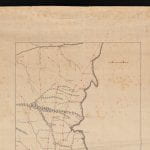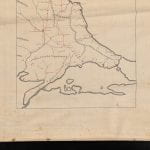As the summer winds down and we move into the fall semester I was able to take stock of the past year and the progress we’ve made in the imaging lab in the library. I started in my position at Amherst in late May 2017 and I spent most of the summer learning about the department I am now part of and developing new imaging workflows to implement in the fall semester. By late September the new workflows were in place and work continued at steady clip until things wound down at the end of the spring semester coinciding with my first anniversary at the college.
Some of the year’s accomplishments include:
- Training seven students with little or no photography experience to digitize items from Amherst’s Archives and Special Collections using DSLR cameras, Capture One Imaging Software, and the Adobe Suite
- Procured and Installed a Digital Transitions imaging system and medium format camera
- Developed and implemented a multi year project to digitize the College Photographer’s Negatives. In our first semester we digitized almost 9000 negatives
- Transitioned from a PC to Mac based work environment.
- Completely rearranged the photography studio; adding and removing tables, installing black curtains to block light and upgrading equipment
- As of this writing we’ve accomplished all of our year one digitization goals for 2017-2018
- We created over 55k new digital images
- Images we digitized last year have been used in the documentary JFK the last speech. The images document a speech President Kennedy gave at Amherst College on Oct. 26, 1963; the last speech he would give in Massachusetts (The entire collection of images are here and here)
While summer here at Amherst was pretty quiet, I was busy finishing up projects and preparing for the upcoming year. We were very fortunate to hire Getrude Ndungu ’19 on a full time basis to help with imaging projects for the summer. She is a great addition to the team and worked on a number of new projects. Her first project was a large selection of the Dean of Faculty Minutes collection. This large collection has an access restriction of 50-years from the present and even then she photographed almost 7 thousand pages of material. Late in the summer, she worked through 18 volumes of the Amherst Graduate Quarterly, an alumni publication which ran 1911-1945. Overall Getrude created over 10,000 new images for the digital repository and while she is graduating this spring, she agreed to continue working with us through the coming year.
Photographing Rolled Oversize Materials

This summer I worked with Mariah Leavitt to photograph some oversize items from the archives. The imaging coincided with a conservation workshop held in the archives focusing on un-rolling and re-rolling a material for conservation that hadn’t seen the light of day for many decades. A small sample was imaged before the workshop to see if photographing the items might be something we want to pursue down the road as a larger, more formal project. As of now, the items are a bit of a mystery and are not yet cataloged. We approached the work with the goal of acquiring some images for archival access while developing a rudimentary workflow to inform us on future projects of like material. After two sessions we walked away with some better-than-decent images and a better understanding of the workflow required for such a job.
Each item was photographed in three pieces and stitched together in Photoshop to create a seamless reproduction of the item. The last image shows the 30×40 inch item “unrolled” at full resolution.
Photography Studio Organization

During my first two semesters,I supervised seven students and one graduate intern working in the studio working 80+ hours per week. Managing the student staff didn’t leave me a lot of time for my other duties including fine-tuning our workspace. As production slowed at the end of the summer and I was able to address some technical and space challenges. The studio is a bit crowded and we always seem to not have enough table and storage space, which was evident when photographing oversize materials even though we seem to be swimming in tables. The studio currently lacks space to store large 2D or flat items. This brief project made me realize that our medium format camera system might be better utilized on the other side of the room as it didn’t leave much room to maneuver the material and created a sort of no-mans land in the back side of the room. After asking around a bit I was fortunate enough to acquire a couple sets of flat files for the studio. This will provide us the ability to safely store larger 2D items from the archives as well the acrylic, foam core and background paper near the camera stations rather then stacking and learning the material around the studio. The flat files will also enable us to replace some of the larger tables with smaller ones that work better with the imaging stations.
In the coming month the student techs will start arriving and we’ll spend some time refreshing everyone on their camera skills in-order to help them recover from the summer induced amnesia. We have many new projects in the queue but will spend most of the first semester working on Alumni Publications and preparing projects for the spring semester including a sampling of the extensive Scrapbook Collection, The Class Album Collection and digitizing the College Photographers negatives which will keep us busy for the years to come.




